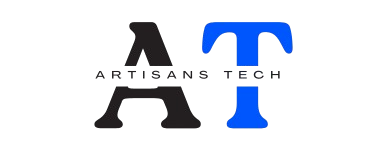Laravel Web3 Authentication DID offers a modern, secure way to integrate blockchain-based authentication into your Laravel applications. By leveraging decentralized identifiers (DIDs) and wallet-based logins, developers can create user-centric, passwordless systems that prioritize privacy and security.
This guide explores how to implement Laravel Web3 Authentication DID, including smart contract interactions and wallet-based login flows, to build cutting-edge decentralized applications (dApps). Whether you’re developing a crypto dashboard or an NFT marketplace, this article provides actionable steps, time-saving tips, and practical use cases to streamline your integration process.
Table of Contents
Why Choose Laravel Web3 Authentication DID?
Traditional authentication systems rely on passwords, which are prone to breaches and user frustration. Laravel Web3 Authentication DID replaces passwords with cryptographic signatures from blockchain wallets like MetaMask, ensuring secure and seamless logins. By incorporating DIDs, you enable self-sovereign identities, allowing users to control their data across platforms. This approach is ideal for developers building decentralized finance (DeFi) apps, NFT marketplaces, or identity-first dApps.
Benefits of Laravel Web3 Authentication DID
- Enhanced Security: Cryptographic signatures eliminate password vulnerabilities.
- User Control: DIDs enable portable, self-sovereign identities.
- Scalability: Laravel’s robust framework supports complex Web3 integrations.
- Time-Saving: Packages like laravel-web3-login simplify setup.
Understanding Web3 Authentication in Laravel
Web3 authentication allows users to log in using their blockchain wallets. Instead of entering credentials, users sign a message (like a nonce) with their wallet’s private key. The Laravel backend verifies this signature to authenticate the user. Adding DID support enhances this by associating wallet addresses with standardized, decentralized identifiers, making authentication interoperable across dApps.
How It Works
The process involves a frontend wallet connection and backend signature verification:
- Frontend: Users connect their wallet (e.g., MetaMask) and sign a unique message.
- Backend: Laravel verifies the signature and maps the wallet address to a user account.
- Session Management: Laravel handles sessions as in traditional authentication.
- DID Integration: Links the wallet address to a W3C-compliant DID for broader compatibility.
Prerequisites for Implementation
Before diving into Laravel Web3 Authentication DID, ensure you have the following:
- Laravel 8.x or higher installed.
- Composer for package management.
- A frontend framework (Vue.js or React recommended) for wallet interactions.
- Familiarity with Ethereum wallets (e.g., MetaMask) and basic blockchain concepts.
- Node.js and npm for frontend dependencies like Web3.js.
Step-by-Step Implementation Guide
Integrating Laravel Web3 Authentication DID requires combining Laravel’s authentication system with Web3 packages and DID standards. Below is a detailed, beginner-friendly guide to get you started.
Step 1: Install Laravel Web3 Login Package
The laravel-web3-login package simplifies wallet-based authentication. Install it via Composer:
composer require m1guelpf/laravel-web3-loginThis package handles signature verification, user mapping, and session management. After installation, publish the configuration:
php artisan vendor:publish --provider="M1guelpf\Web3Login\Web3LoginServiceProvider"Step 2: Configure the Database
Add an eth_address column to your users table to store wallet addresses. Run this migration:
php artisan make:migration add_eth_address_to_users_tableEdit the migration file:
Schema::table('users', function (Blueprint $table) {
$table->string('eth_address')->unique()->nullable();
});Run the migration:
php artisan migrateStep 3: Set Up Frontend Wallet Connection
Use Web3.js to connect the user’s wallet on the frontend. Below is a simple Vue.js example:
<template>
<button @click="loginWithWallet">Login with MetaMask</button>
</template>
<script>
import Web3 from 'web3';
export default {
methods: {
async loginWithWallet() {
if (window.ethereum) {
const web3 = new Web3(window.ethereum);
try {
const accounts = await window.ethereum.request({ method: 'eth_requestAccounts' });
const nonce = await this.getNonce(accounts[0]);
const signature = await web3.eth.personal.sign(nonce, accounts[0]);
this.authenticate(accounts[0], signature);
} catch (error) {
console.error('Login failed:', error);
}
} else {
alert('Please install MetaMask!');
}
},
async getNonce(address) {
const response = await axios.get('/web3/nonce', { params: { address } });
return response.data.nonce;
},
async authenticate(address, signature) {
const response = await axios.post('/web3/login', { address, signature });
if (response.data.success) {
window.location.href = '/dashboard';
}
}
}
};
</script>Step 4: Backend Signature Verification
The laravel-web3-login package handles signature verification. Configure the authentication route in routes/web.php:
Route::get('/web3/nonce', 'Web3LoginController@getNonce');
Route::post('/web3/login', 'Web3LoginController@login');The package verifies the signature using the kornrunner/keccak library for Ethereum-compatible hashing. If valid, it logs in the user or creates a new account if the eth_address is not found.
Step 5: Adding DID Support
To integrate DIDs, associate the user’s wallet address with a W3C-compliant DID. Use a DID resolver like did-resolver (available via npm):
npm install did-resolverIn your Laravel backend, store the DID alongside the eth_address. Update the user model:
class User extends Authenticatable {
protected $fillable = ['name', 'email', 'eth_address', 'did'];
}When a user logs in, generate or link a DID:
use DID\Resolver;
public function login(Request $request) {
$address = $request->input('address');
$signature = $request->input('signature');
// Verify signature (handled by laravel-web3-login)
if ($this->verifySignature($address, $signature)) {
$user = User::where('eth_address', $address)->first();
if (!$user) {
$did = $this->generateDID($address); // Custom DID generation logic
$user = User::create([
'eth_address' => $address,
'did' => $did,
]);
}
Auth::login($user);
return response()->json(['success' => true]);
}
return response()->json(['success' => false], 401);
}Step 6: Smart Contract Interactions
For advanced use cases, interact with Ethereum smart contracts to verify NFT ownership or token balances. Use the web3.php library:
composer require web3p/web3.phpExample: Check if a user owns a specific NFT:
use Web3\Web3;
use Web3\Contract;
public function checkNFTOwnership($address) {
$web3 = new Web3('https://mainnet.infura.io/v3/YOUR_INFURA_KEY');
$contract = new Contract($web3->provider, $abi); // ABI of your NFT contract
$contract->at('0xYourContractAddress')->call('balanceOf', $address, function ($err, $result) {
return $result[0]->toString() > 0;
});
}Step 7: Optimize for Performance
To avoid slow performance, a common pain point in Web3 apps:
- Cache nonces to reduce database queries.
- Use asynchronous signature verification to improve response times.
- Optimize smart contract calls with Infura or Alchemy for faster blockchain interactions.
Use Cases for Laravel Web3 Authentication DID
Laravel Web3 Authentication DID is versatile for various applications:
- DeFi Dashboards: Allow users to access financial tools with wallet-based logins.
- NFT Marketplaces: Restrict access to users holding specific NFTs or tokens.
- Decentralized Identity Apps: Use DIDs for cross-platform, self-sovereign identity management.
- Crypto Communities: Enable secure, token-gated community platforms.
Time-Saving Shortcuts
To streamline your Laravel Web3 Authentication DID integration:
- Use pre-built packages like laravel-web3-login to avoid manual signature verification.
- Leverage QuickNode tutorials for ready-to-use code snippets (QuickNode Guide).
- Explore GitHub repos like web3-metamask-authentication for sample projects (GitHub).
- Use Laravel’s built-in session management to minimize custom code.
Security Considerations
- Nonce Expiry: Ensure nonces expire after a short period (e.g., 5 minutes) to prevent replay attacks.
- Signature Validation: Always verify signatures server-side using trusted libraries.
- DID Standards: Follow W3C DID specifications for interoperability (W3C DID).
- Rate Limiting: Protect your API endpoints from brute-force attacks.
Conclusion
Laravel Web3 Authentication DID empowers developers to build secure, user-centric applications with wallet-based logins and decentralized identities. By combining packages like laravel-web3-login with DID standards and smart contract interactions, you can create robust dApps for DeFi, NFTs, or identity management. Follow the steps outlined, leverage time-saving shortcuts, and prioritize security to deliver a seamless experience. Start integrating Laravel Web3 Authentication DID today to stay ahead in the decentralized world.
FAQs
1. What is Laravel Web3 Authentication DID?
Laravel Web3 Authentication DID combines Laravel’s authentication system with blockchain wallet logins (like MetaMask) and Decentralized Identifiers (DIDs). It allows users to log in securely using cryptographic signatures instead of passwords, with DIDs enabling self-sovereign, portable identities across decentralized apps.
2. How do I set up Web3 authentication in Laravel?
Install the laravel-web3-login package using Composer (composer require m1guelpf/laravel-web3-login), add an eth_address column to your users table, and configure frontend wallet connections with Web3.js. The backend verifies signatures and manages sessions, as outlined in detailed guides like this Laravel Web3 Guide.
3. Why use DIDs with Laravel Web3 authentication?
DIDs provide a standardized, decentralized way to manage user identities. They enhance Laravel Web3 Authentication DID by making identities portable across platforms, improving privacy, and enabling interoperability with other dApps, following W3C standards.
4. Can I integrate MetaMask with Laravel for Web3 login?
Yes! Use Web3.js on the frontend to connect MetaMask, prompt users to sign a nonce, and send the signature to Laravel’s backend. The laravel-web3-login package simplifies signature verification and user authentication.
5. What are the benefits of Laravel Web3 Authentication DID?
- Security: Eliminates password vulnerabilities with cryptographic signatures.
- User Control: DIDs enable self-sovereign identity management.
- Flexibility: Supports DeFi, NFT marketplaces, and identity-first dApps.
- Ease of Use: Packages streamline integration with Laravel’s ecosystem.
6. How do I add NFT-based access control with Laravel Web3 Authentication DID?
Use the web3.php library to interact with Ethereum smart contracts. Check NFT ownership by calling the balanceOf function on the contract. Combine this with Laravel Web3 Authentication DID to restrict access based on wallet holdings.
7. What are common issues with Laravel Web3 Authentication DID?
Common issues include MetaMask detection failures (check window.ethereum), signature verification errors (ensure Keccak-256 hashing), and slow blockchain calls (use providers like Infura). Always implement nonce expiry and rate limiting for security.




